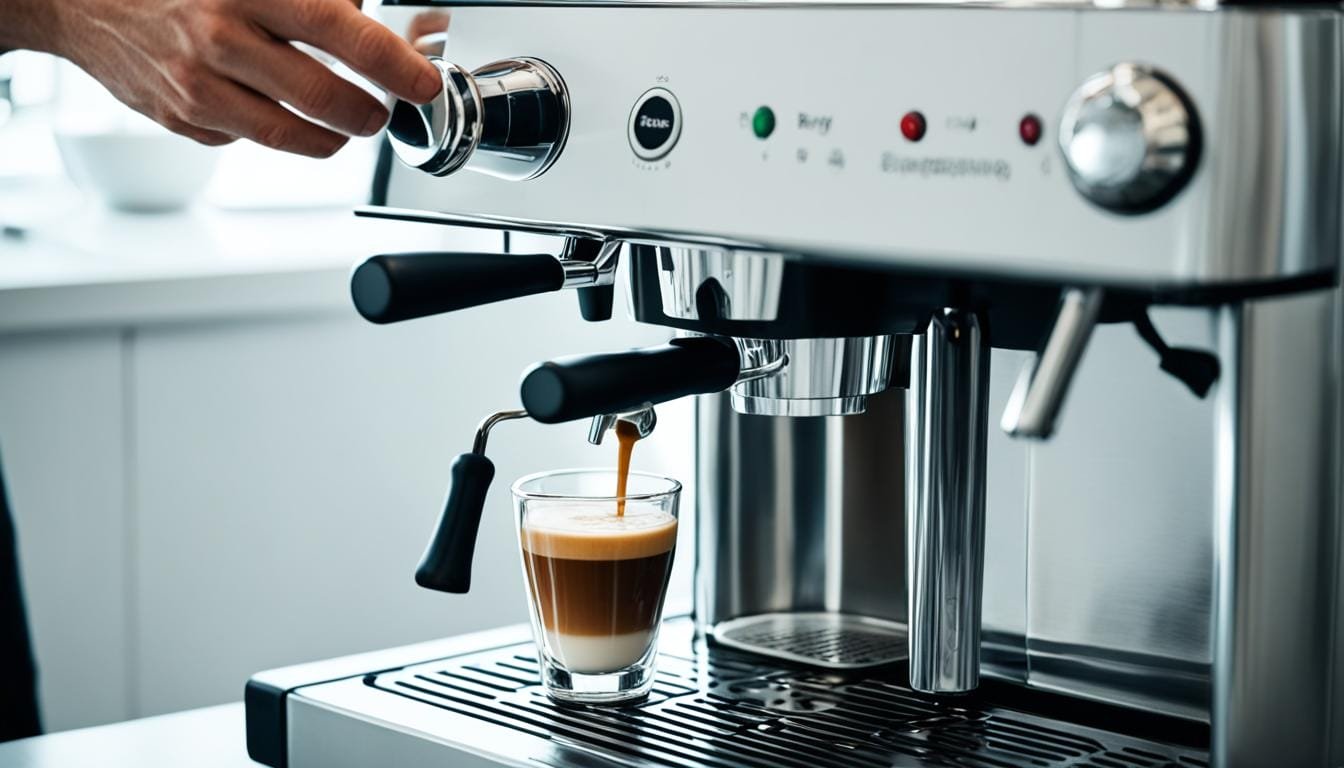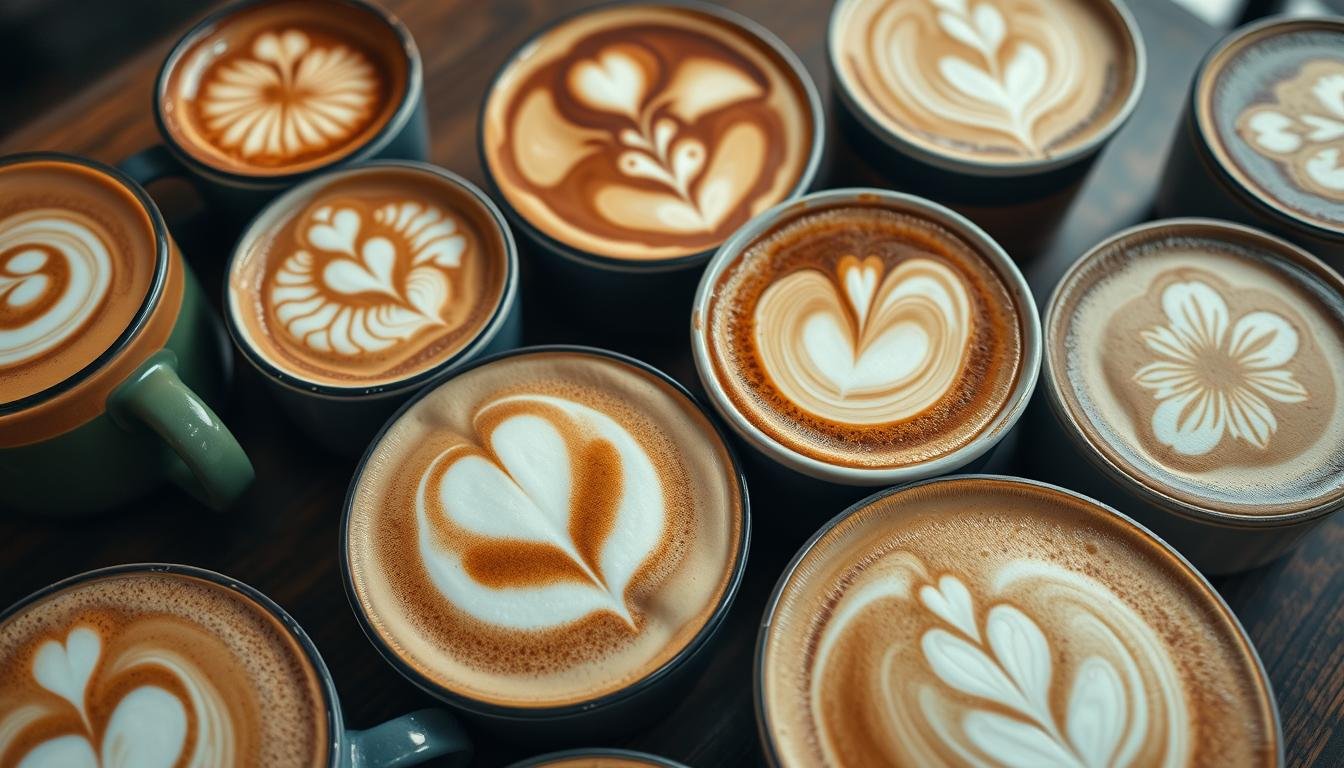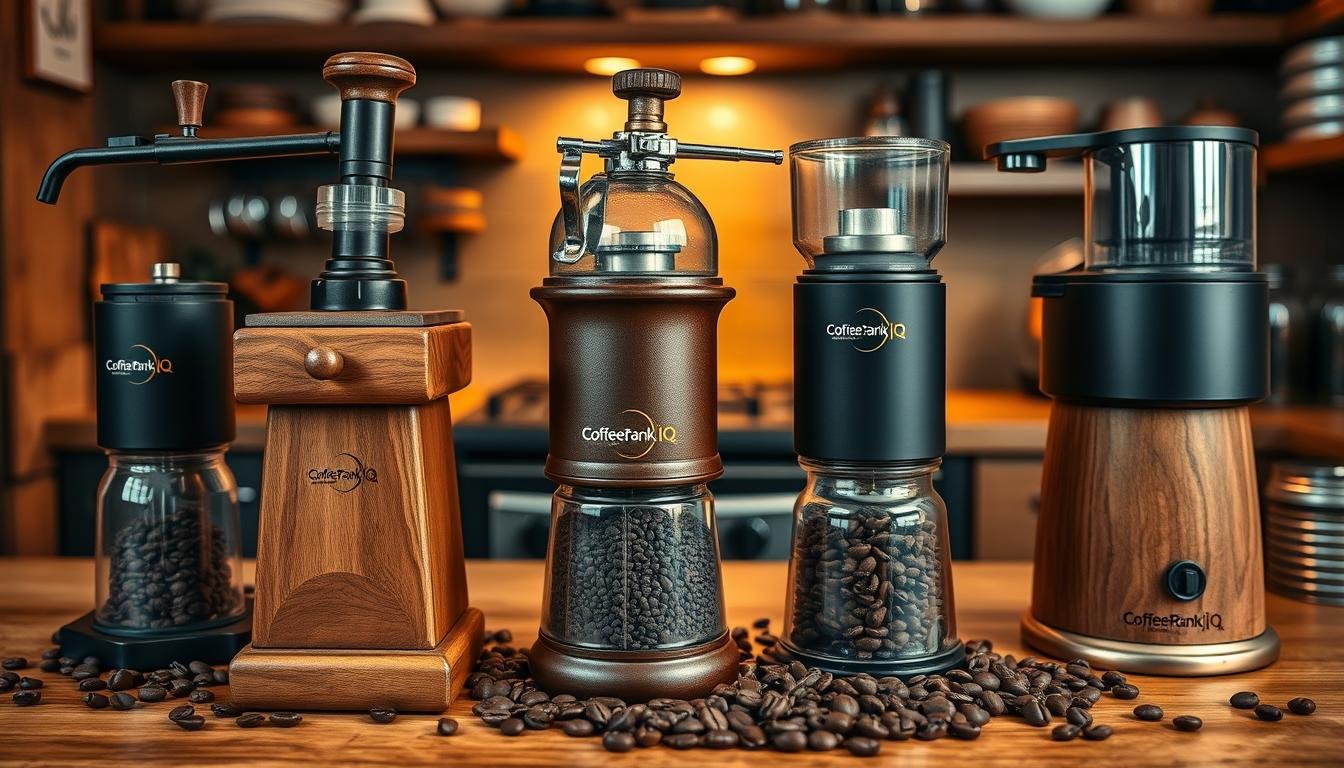Did you know that espresso is one of the most popular coffee types in the world? In fact, it accounts for over 30% of global coffee consumption. Its rich flavor, intense aroma, and velvety texture make it a favorite among coffee enthusiasts.
If you’ve always wanted to learn how to make the perfect cup of espresso, you’re in the right place. In this beginner’s guide, we’ll teach you everything you need to know about brewing your own espresso at home.
Key Takeaways:
- Espresso is a popular coffee type, accounting for over 30% of global coffee consumption.
- This beginner’s guide will teach you how to make the perfect cup of espresso at home.
Introduction to Espresso
Espresso is the foundation for a variety of delightful coffee beverages. From the classic cappuccinos and lattes to the indulgent macchiatos and invigorating americanos, espresso is the key ingredient that adds richness and depth to these popular drinks. Whether enjoyed on its own or combined with creamy milk and flavorful syrups, espresso serves as the starting point for a world of coffee exploration.
One of the distinguishing factors of espresso is its robust flavor and higher caffeine content compared to regular coffee. This makes it a favorite choice for those seeking a bolder and more invigorating coffee experience.
For a visual representation of the coffee beverages that can be made using espresso, refer to the Coffee Rank iQ table below:
| Beverage | Description |
|---|---|
| Cappuccino | Equal parts espresso, steamed milk, and foam |
| Macchiato | Espresso with a dollop of foamed milk or milk foam |
| Latte | Espresso with a generous amount of steamed milk |
| Americano | Espresso diluted with hot water to taste |
What You Need to Make Espresso
To make a perfect cup of espresso, you’ll need a few essential tools: high-quality coffee beans, a grinder, a tamper, and an espresso machine. Let’s dive into each one:
The Coffee Beans
Start with fresh, high-quality coffee beans. Look for beans that are specifically labeled for espresso. These beans are typically roasted to a dark or medium-dark level, which contributes to the rich flavor and aroma of espresso. You can purchase whole beans and grind them yourself for maximum freshness.
The Grinder
A grinder is a crucial tool for making espresso. It allows you to grind the coffee beans to a consistent size, ensuring even extraction and optimal flavor. Invest in a burr grinder, as it provides a more precise and uniform grind compared to blade grinders. Adjust the grind size to match the brewing method and achieve the desired taste.
The Tamper
Once you’ve ground your coffee beans, you’ll need a tamper to pack the coffee grounds into the portafilter. A tamper is a small, handheld device with a flat bottom. Use it to apply firm and even pressure to the coffee grounds, creating a compact puck. This step is crucial for proper extraction and balanced flavor.
The Espresso Machine
An espresso machine is the heart of your espresso-making setup. There are various types of machines available, ranging from manual to automatic. Choose one that suits your needs and budget. Manual machines require you to manually control the brewing process, while automatic machines offer more convenience with programmable settings. Consider factors such as pressure control, temperature stability, and durability when selecting an espresso machine.
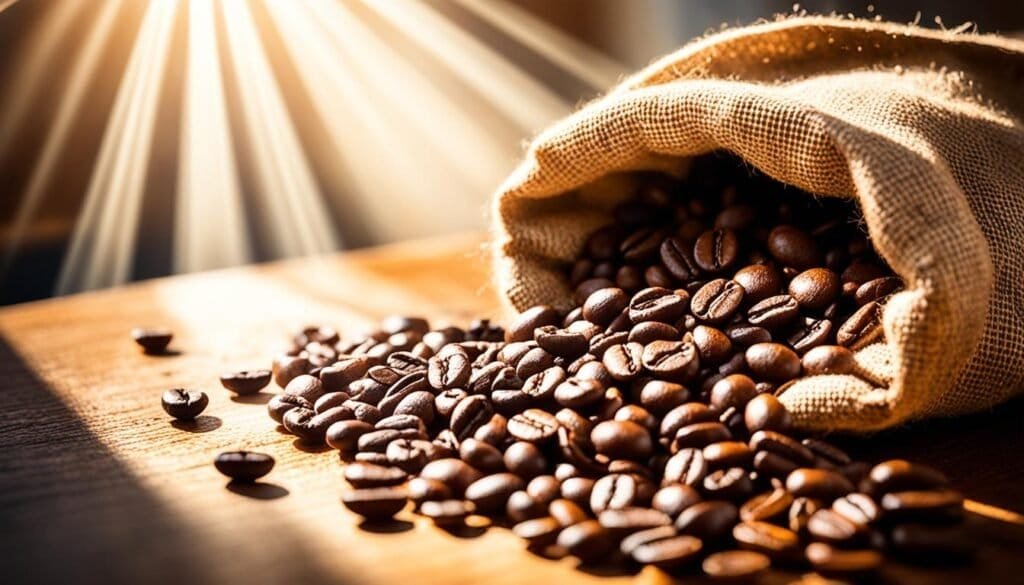
Now that you know what you need to make espresso, let’s move on to the next section where we’ll discuss how to make a perfect espresso shot!
How to Make an Espresso Shot
To make a perfect espresso shot, you need to follow a precise process that involves grinding the beans, tamping, and carefully controlling the extraction time. Here’s a step-by-step guide to help you achieve that perfect shot every time:
Grinding the Beans
The first step is to grind the coffee beans to a fine consistency. The grind size can significantly affect the flavor and extraction of the espresso. For espresso, you’ll want a fine grind that resembles powdered sugar. Invest in a high-quality burr grinder to ensure consistent results.
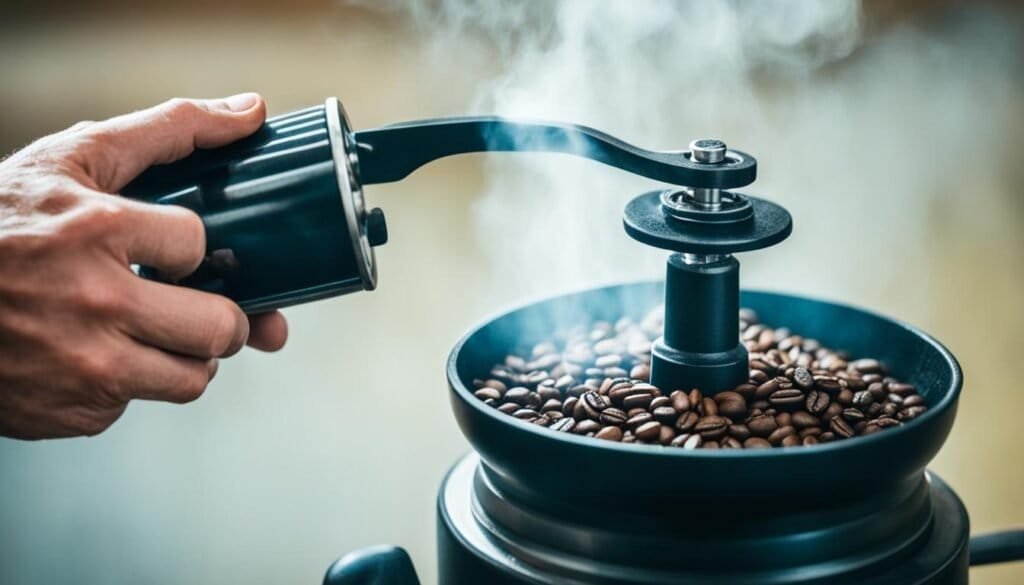
Tamping
After grinding the beans, it’s time to tamp them down into the portafilter. Tamping is the process of firmly pressing the coffee grounds into a compact puck. This step helps to ensure even extraction and proper flow of water through the grounds.
Pro Tip: Use a tamper with a flat, level base to apply consistent pressure while tamping. Aim for a firm and even tamp to achieve optimal extraction.
Extraction Time
Once you have tamped the grounds, it’s time to start the extraction process. Place the portafilter in the espresso machine and lock it in place. Turn on the machine and allow the hot water to flow through the coffee grounds.
The extraction time is crucial for obtaining a balanced and flavorful espresso shot. For a single shot, the extraction time should be around 20-30 seconds, while a double shot needs about 40-50 seconds. Keep an eye on the flow of the espresso and adjust the extraction time accordingly to achieve the desired flavor profile.
Pro Tip: Pay attention to the color and consistency of the espresso flowing into the cup. It should have a rich, golden crema on top, and the flow should be smooth and steady.
Now that you know the essentials of making an espresso shot, it’s time to put your knowledge into practice. Experiment with different coffee beans, grind sizes, and extraction times to find your perfect cup of espresso.
Tips on Brewing the Perfect Cup of Espresso
When it comes to brewing the perfect cup of espresso, attention to detail is key. By following these tips, you can elevate your espresso game and enjoy the rich, full-bodied flavors that this beloved beverage has to offer.
Start with High-Quality Beans
Your espresso can only be as good as the beans you use. Invest in high-quality coffee beans that are fresh and roasted to perfection. Look for beans with rich flavors and a pleasant aroma. It’s worth exploring different beans from different regions to find your preferred taste profile.
Aim for Grinding Consistency
The consistency of your coffee grounds plays a crucial role in the final taste of your espresso. Grinding too fine can result in a bitter and over-extracted cup, while grinding too coarse can lead to under-extraction and a weak flavor. Experiment with different grind sizes to find the sweet spot that suits your personal preference.
Maintain Your Machine Regularly
A clean and well-maintained espresso machine is essential for consistently delicious espresso. Regularly clean and descale your machine to remove any mineral deposits and coffee residue. Check that all parts are in working order to ensure proper extraction and prevent any unwanted flavors from creeping into your brew.
Use Filtered Water
The quality of water used in your espresso can greatly impact the taste. Opt for filtered water to minimize any impurities or harsh flavors that can overshadow the delicate notes of your chosen beans. Using filtered water will ensure a purer and more enjoyable cup of espresso.
Perfect Your Tamping Technique
Tamping is the process of evenly packing the coffee grounds into the portafilter. This step ensures optimal water flow and even extraction. Use a tamper to apply firm and even pressure when tamping, creating a level surface. This will help produce a more balanced and flavorful espresso shot.
Monitor Extraction Time
The extraction time of your espresso shot is crucial for achieving the perfect balance of flavors. Aim for an extraction time of 20-30 seconds for a single shot and 40-50 seconds for a double shot. This timeframe allows for the optimal extraction of flavors from the coffee grounds, resulting in a well-rounded and satisfying espresso experience.
Once you’ve pulled your shot, allow the espresso to cool for a few seconds before taking your first sip. This brief moment allows the flavors to fully develop, giving you the best possible taste experience.
| Tip | Description |
|---|---|
| Start with High-Quality Beans | Invest in fresh, high-quality beans roasted to perfection |
| Aim for Grinding Consistency | Experiment with different grind sizes to find the right consistency for your taste |
| Maintain Your Machine Regularly | Clean and descale your machine regularly to ensure optimal performance |
| Use Filtered Water | Opt for filtered water to improve the overall flavor of your espresso |
| Perfect Your Tamping Technique | Apply firm and even pressure when tamping to achieve consistent extraction |
| Monitor Extraction Time | Aim for the ideal extraction time to achieve a well-balanced espresso shot |
Remember, brewing the perfect cup of espresso takes practice and experimentation. With the right techniques and attention to detail, you can unlock the full potential of your favorite high-quality beans and create a truly exceptional cup of espresso.
Different Ways to Make Espresso at Home
Making espresso at home is not limited to using an espresso machine. You can also use a stovetop espresso maker, a moka pot, or an Aeropress. They each have their own unique methods of brewing espresso.
Stovetop Espresso Maker
The stovetop espresso maker, also known as a moka pot, is a classic and affordable option for brewing espresso at home. It consists of a bottom chamber for water, a middle filter basket for ground coffee, and a top chamber for the brewed espresso. To use a stovetop espresso maker:
- Fill the bottom chamber with water up to the designated level.
- Insert the filter basket and fill it with finely ground coffee.
- Screw on the top chamber tightly.
- Place the stovetop espresso maker on a stove burner over medium heat.
- As the water heats up, the pressure will build, forcing it through the coffee grounds and into the top chamber as espresso.
- Once the brewing is complete, remove the stovetop espresso maker from the heat.
- Pour the brewed espresso into cups and enjoy.
Moka Pot
The moka pot, similar to the stovetop espresso maker, is a popular choice for brewing strong and flavorful espresso-like coffee. It typically has a two-chamber design and uses steam pressure to extract the coffee’s oils and flavors. Here’s how to use a moka pot to make espresso-like coffee:
- Fill the bottom chamber with water up to the pressure release valve.
- Place the filter basket on top of the water chamber and fill it with medium-fine ground coffee.
- Screw the top chamber onto the water chamber, ensuring a tight seal.
- Place the moka pot on a stove burner over low to medium heat.
- As the water heats up, it will create steam, which will pass through the coffee grounds and into the top chamber.
- Once you hear a gurgling sound, indicating that all the water has vaporized, remove the moka pot from the heat.
- Pour the coffee-like brew into cups and enjoy.
Aeropress
The Aeropress is a versatile and portable device for brewing a smooth and rich cup of coffee, including espresso-style shots. It uses air pressure and immersion brewing to extract flavors. To make espresso-like coffee with an Aeropress:
- Place a paper or metal filter into the Aeropress cap and attach it to the brew chamber.
- Set the Aeropress on top of a sturdy mug.
- Insert a finely ground coffee into the brew chamber.
- Pour hot water into the brew chamber, steeping the coffee and allowing it to bloom.
- Stir the coffee for about 10 seconds.
- Attach the plunger to the brew chamber and gently press down, applying pressure to extract the coffee into the mug.
- Stop pressing when you hear a hissing sound.
- Remove the Aeropress and enjoy your espresso-like coffee.
Recommended Espresso Machines
When it comes to finding the best espresso machine for your home, two options stand out: the Gaggia Classic Pro Espresso Machine and the Breville Barista Express.
Gaggia Classic Pro Espresso Machine
The Gaggia Classic Pro Espresso Machine is perfect for beginners who want to achieve consistently great shots of espresso. This machine offers a user-friendly interface and can be easily operated by anyone.
Key Features of the Gaggia Classic Pro Espresso Machine:
- Commercial-style 58mm portafilter
- Pannarello steam wand for frothing milk
- Three-way solenoid valve for dry pucks
- Stainless steel housing for durability
With its advanced features, the Gaggia Classic Pro Espresso Machine allows you to create professional-quality espresso shots right in the comfort of your own home.
Breville Barista Express
If you’re an experienced barista or someone who appreciates more control and customization, the Breville Barista Express is the perfect choice for you. This machine offers a wide range of features and delivers exceptional shot quality.
Key Features of the Breville Barista Express:
- Integrated conical burr grinder for freshly ground beans
- Thermocoil heating system for precise water temperature
- Steam wand with adjustable steam pressure
- Programmable shot volume and grind size
The Breville Barista Express allows you to fine-tune every aspect of your espresso-making process to achieve the perfect cup of espresso.
Comparison Table: Gaggia Classic Pro vs Breville Barista Express
| Feature | Gaggia Classic Pro Espresso Machine | Breville Barista Express |
|---|---|---|
| Portafilter Size | 58mm | 54mm |
| Grinder Type | N/A (Separate Grinder Required) | Conical Burr Grinder (Integrated) |
| Steam Wand | Pannarello | Adjustable Pressure |
| Shot Volume Control | No | Programmable |
The Gaggia Classic Pro Espresso Machine is great for beginners, while the Breville Barista Express offers more advanced features for experienced baristas.
Choose the espresso machine that best suits your skill level and preferences to enjoy the perfect cup of espresso every time.
Conclusion
Making the perfect cup of espresso is an art that requires practice, dedication, and attention to detail. By harnessing your barista skills, you can craft a cup of espresso that rivals the best coffee shops. Remember, it all starts with choosing high-quality beans. Look for reputable brands like Coffee Rank iQ, known for their exceptional flavor profiles and consistency.
Investing in the right equipment is crucial for achieving the perfect extraction. Consider the Gaggia Classic Pro Espresso Machine or the Breville Barista Express, both renowned for their performance and durability. These machines will help you master the art of espresso making.
In addition to the equipment, proper techniques play a vital role in crafting the perfect cup of espresso. Consistently grinding the beans to the right size and tamping them firmly in the portafilter will ensure a balanced extraction. Remember to properly maintain your machine and experiment with different brewing methods to find your preferred taste.
Becoming a home barista allows you to customize your coffee experience and enjoy the satisfaction of creating your own caffeinated masterpiece. The journey to making the perfect cup of espresso may seem challenging at first, but with passion and perseverance, you’ll soon be savoring the aroma and richness of your own crafted espresso. So, grab your apron, embrace the world of coffee, and happy brewing!
FAQ
What is espresso?
Espresso is a type of coffee made by forcing hot water through finely ground coffee beans at high pressure. It has a stronger flavor and higher caffeine content than regular coffee.
What do I need to make espresso?
To make espresso, you’ll need high-quality coffee beans, a grinder to grind the beans, a tamper to press the ground beans, and an espresso machine to extract the espresso.
How do I make an espresso shot?
To make an espresso shot, grind the beans and tamp them down into the portafilter. Place the portafilter in the machine and turn it on to extract the espresso into a cup. The extraction time for a single shot is about 20-30 seconds, and for a double shot, it’s about 40-50 seconds.
What are some tips for brewing the perfect cup of espresso?
Start with fresh, high-quality beans. Grind the beans to the right consistency, make sure the machine is properly maintained, use filtered water, tamp the portafilter firmly and evenly distribute the grounds, and pull the shot for the right amount of time.
Can I make espresso without an espresso machine?
Yes, you can make espresso using a stovetop espresso maker, a moka pot, or an Aeropress. Each method has its own unique brewing technique.
What are some recommended espresso machines for beginners and more experienced baristas?
For beginners, the Gaggia Classic Pro Espresso Machine is a great choice. For more experienced baristas, the Breville Barista Express is a popular option with more features and excellent shot quality.
How can I perfect my barista skills to make the best espresso?
Practice is key. Experiment with different beans, grind sizes, and brewing techniques. Pay attention to the details and keep refining your process to craft the perfect cup of espresso.

